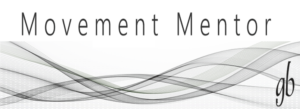

FAQs for Seniors
We are designed to move in harmony with nature – balanced, poised and pain-free. Yet, these natural freedoms tend to fade as we age. How can we return to a sense of ease, to feeling at home again in our bodies?” Based on the Alexander Technique and Glenna’s expertise in rehabilitation science, Mentored Moves is a way to improve postural poise, balance, and skillful ease in any activity.
How to stay upright & safe
1.Why is this practice so useful?
This kind of work can be applied at any age or stage of life and requires no previous training. It also requires no special equipment, meditative space or additional practice time outside of your everyday activities.
- Why isn’t yoga or a stretching program enough?
The fact that our bodies and minds are unified means that when we exercise, the benefits gained are both physical and metaphysical. However, how you do an exercise makes all the difference in the world between benefiting fully or potentially injuring yourself. The AT offers you that kind of body knowledge and confidence to know that you are exercizing safely, effectively, and most important – enjoyably.
- Is the Alexander Technique the same as ‘mindfulness’ training?
Alexander Technique is a study in noticing stressful reactions to thoughts and movements. It requires awareness of how thoughts and bodily feelings work together to either create harmony or disharmony. While it is a ‘mindful’ practice, it is not similar to mindfulness training. Mindfulness trainings are extremely beneficial as meditative practices, and certainly learning how to meditate can influence daily life. However, Alexander Technique trains you how to be ‘mindful’ on the go, in everyday activities – how to notice when you are feeling stressed and how to redirect yourself back towards feeling comfortable and safe. So, I guess we could call this work ‘mindfulness in action.’
- Will mindfulness in action take away my pain?
Pain is an intriguing and mysterious phenomenon. Ridding a person of pain – especially chronic pain – is not something easily guaranteed by any drug, surgery, or other mind-altering experience. What the Alexander Technique can help you do is come into deeper, quieter harmony within yourself, so that you do not feel you have to ‘fight’ your pain. By bringing the body into better balance – mechanically and metaphysically, it is easier to recognize areas of support – physical and mental – that help you feel better overall. It is a form of self-care that you can use to achieve daily attunement. These tools of self-care help with improved balance, coordination and overall body-mind organization and coordination – which, in turn, helps alleviate pain
5. I have ______________(a chronic disease – arthritis, Parkinson disease, post-polio syndrome). What can this work do for me?
The philosophy and practice of this embodied form of mindfulness in action is based on the concept that a person has more natural skills, resources and abilities available to them than they are using. By helping you understand how you are using what you have and showing you how to expand the ability for self-organization, you may well find new functional capability and ease of movement that you didn’t know you had.
6. I’m retired, but I lead a very busy life. How can I integrate these tips into my busy schedule?
This work requires no additional practice time outside of your busy life – only the need to pause every now and then and re-collect yourself. What you are practicing is training your ability to notice how you are moving in your everyday activities – driving, doing dishes, talking on the cell phone, etc. Just like tuning on a radio that’s gone a bit static, by tuning the radio to the right station, you can apply these principles to return to a more comfortable and supported state. You’ll learn practical tips in any lesson that can help you establish an ongoing practice.
- Will this practice interfere with my blood pressure medicine? (or other medicine?)
Embodied mindfulness is a non-invasive technique that should in no way interfere with current prescription medicine. The focus of the lesson is on daily activities that you already routinely do. If you wish to have a table lesson, then transitions to and from the (low) table are slow and guided. Should you experience unexpected dizziness or other side effects as a consequence of the lesson, you need to see your doctor.
- I really love my meditation class (my tai chi class, etc.) and don’t want to give it up. Will paying attention in this way interfere?
No! If anything, this kind of daily mindful practice is a wonderful complement to other wellness classes, deepening the principles of body awareness, and, most important, taking them beyond the classroom into daily living for lasting value of health.
- I’m just about ready to have my hip replaced. Should I wait to begin this practice or start now?
First, if you are preparing for a hip replacement, this is a great time to begin to learn the basics of embodied awareness that can help you through both the preparatory and the recovery phase. Glenna’s experience has shown that people need to build a toolkit to help themselves while going through these procedures. Learning to stay with yourself while undergoing a necessary (but unavoidably traumatic) surgery plays a key role in helping speed recovery. Second, if you are past the acute stage of hip replacement (discharged to your home), this approach will help you fully restore your ease and comfort in daily functional activities. As your body adjusts to the new hip, mindful practice in daily functioning is a necessity to help you find a renewed sense of postural support, remove undue effort associated with old patterns of use, and gain maximal benefits out of the rehabilitation exercises.
- I have COPD (Chronic Obstructive Pulmonary Disease) and my lungs are damaged. Can this work allow me to breathe more easily?
This work has a proven track record of assisting people with reducing the work of breathing. While not restoring damaged lungs to their previous undamaged condition, paying attention to the quality of your breath and being more present during your breathing in positions of rest can help you move easier in more challenging ones, like standing, walking, and climbing stairs.
- I’ve had a couple of falls this year. Would this work be a good thing for fall prevention?
Yes! The practices outlined here are designed specifically to enhance your overall body awareness of yourself in space, which has a positive effect on your confidence in navigating in daily life. Having a better understanding and feeling sense of where your body is at any given time in your daily activities and how readily and easily you are moving, are two powerful elements of balance confidence. Improved body awareness in space, along with a more expanded program of fall prevention education, will help your body be more present, resilient, and responsive to balance challenges in everyday life. Glenna can help you customize your balance program.
- I have noticed that I forget things easily now. Will this work help me improve my memory?
Memory is complex and evolves over a lifetime of experience. Bringing embodied awareness into your everyday life fosters a greater sense of needs and self-care. The work can help you organize your daily life in ways that deepen your internal (bodily) sense of connection to things that matter.
- I used to [ jog, swim, dance, etc.) when I was younger. Do you think AT can help me get back to doing this again?
This work is designed is a mind-body education practice that improves postural support and balance at any age and stage. It’s wise to go back to the basics of upright postural support first, and then, once you’ve learned to let go of old, injurious movement habits, you can begin to institute these principles of AT into more skillful activities.
- I’ve noticed that I’m not as upright (tall) as I used to be and my husband/wife complains that I slump. Can this work help me?
Embodied presence allows you to come into a place of greater comfort and support at any time. People often report that this work allows them to stand better and “feel taller.” When you rid yourself of unnecessary tensions that compress your body and pull it out of balance, you will, in fact, “be” taller. Glenna can help you find supportive postures in everyday – standing, sitting, bending, walking, reaching. These ‘training wheels’ can help you avoid postural ‘collapse’ or ‘slumping.’ Over time, with a bit of practice and self-care, you might find that upright is a flexible concept.
- I’ve developed ______________(a pot belly, a dowager’s hump, rounded shoulders, a hang-dog look). Do you think this work can help me look better?
By bringing your body into better skeletal balance and releasing unnecessary muscular tensions, you’d be surprised at the physical improvement in attractiveness. Think of persons that are stately and poised. This is often the result of good body use – ease, elegant, efficient.
- I have trouble sleeping…can’t seem to get comfortable in bed. Does AT have something to offer?
By helping you identify and remove tensions that work adversely on your body all day, embodied mindfulness can help you relax better at night. Glenna can provide a number of strategies here to improve your ways of lying down and coming into a state of rest.
- I’m a caretaker for my [husband/wife/significant other), and I’m frequently worn out by that role. Can this work help me reduce my stress?
Practicing the principles of the Technique help you notice behavioral patterns of reaction and negative thinking. You can redirect these reactions by learning how to relieve postural stresses that take a toll on you physically, as well as mentally. You can learn to redirect your thoughts once your body begins to feel more relaxed and comfortable. While the stress of a caretaker role might not be something you can eliminate, the strain on your bodycan be reduced.
- I no longer can get out of my favorite chair easily (in and out of my car, etc.) What can this work do to help this problem?
When people experience physical difficulty in transferring from one place to another, they expect that same difficulty to always arise. This expected stress biases the body’s musculature and makes it even harder to accomplish the task. Here you’ll learn step-by-step principles of coordination that can be utilized in any daily task.
- Where can I learn more about the this kind of work?
There are a number of good websites offering lists of articles, books, and other resources at the end of this book. Please look at the website links under ‘ABOUT and by all means…contact Glenna.